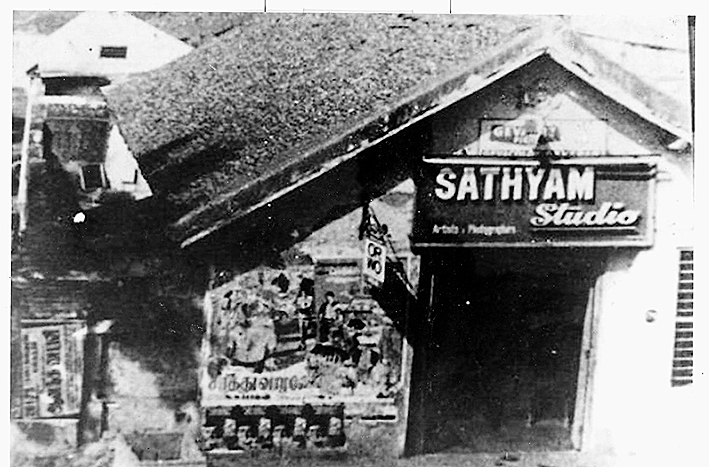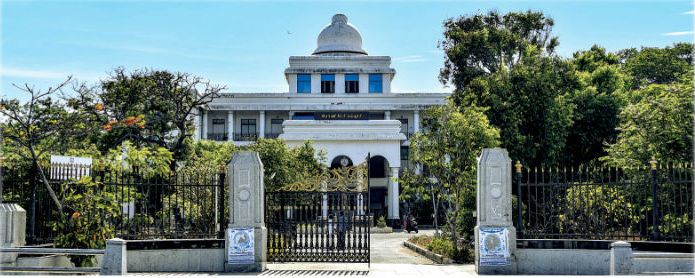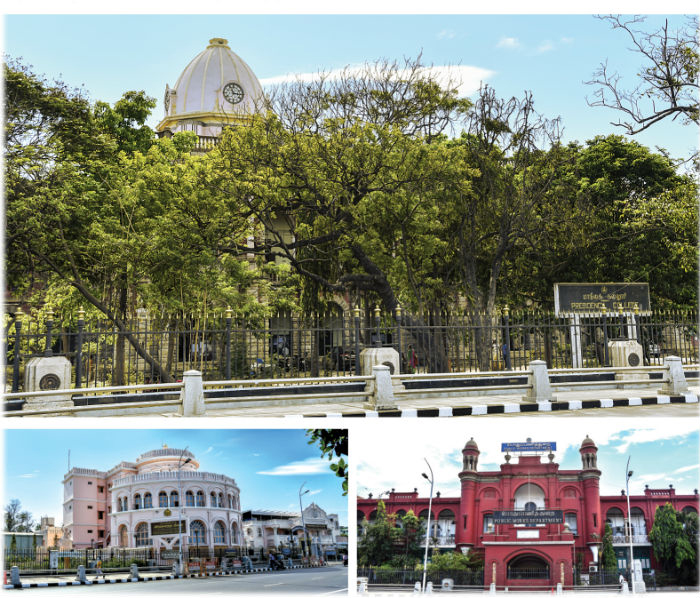Registered with the Registrar of Newspapers for India under R.N.I 53640/91
Vol. XXVIII No. 4, June 1-15, 2018
Archives: Vol. XXVIII No. 4, June 1-15, 2018
Proceeding insidiously with City expansion
By The Editor
The expansion of the Chennai Metropolitan Area to 8,878 sq.km thereby making it the second largest metropolitan region in India, the National Capital Region being the first, appears to have become reality. This is evident from the way the State Government is pressing ahead with it despite claiming that it is only an idea, subject to public approval. That this is being planned despite the misgivings of environmentalists and independent city planners is lamentable and is likely to prove hugely detrimental to Chennai and its neighbourhoods in the decades to come.
It was in August last year that the Government announced this expansion, to include all of Thiruvallur and Kanchipuram Districts, apart from Arakkonam Taluk. All of this, it was claimed, was being done to boost infrastructure and maintain uniformity in development to counter the effect of ever-increasing population in the city. This was roundly criticised on several counts. Civic agencies in charge of the city have proved completely incapable of managing even the existing area of 1,177 sq.km.
Public consultations were held in April this year and those who attended raised several concerns. Foremost among these was the impact such a move would have on several ecological hotspots and around 4,200 water bodies. The very word ‘expansion’ was anathema to many who felt that the city had to manage with what it had and not look to gobble up everything in the vicinity. The impact of urbanisation of heritage spots such as Kanchi and Mamallapuram was also highlighted as also the risk of many designated agricultural areas becoming agricultural layouts. To all of this the Government officials in attendance had just one response – that the idea was still in the concept stage and that nothing would be done without further consulting with the public.
How then are we to explain the next announcement that was made early in May to the effect that consultants would soon be appointed for going ahead with a plan for the expansion? The terms of reference for the consultant include creating a master plan that would be done after surveying land use, spatial planning, infrastructure and transport facilities. In short, the Government has decided to implement its plan, no matter what the public feels about it. What is expected from the consultant is a master plan for the city, which will be Chennai’s third. The second master plan, whose term was to be from 2008 to 2026, will therefore be abandoned.
It is interesting to note that the second master plan had a public consultation in 2008 immediately after its release. Madras Musings reported on it and documented that it was criticised on the grounds of having no zonal and regional development plans, being silent on waste disposal and drainage, not focusing on affordable housing, having no information of water supply, ignoring the claims of the Pallikaranai Marsh and heritage structures and not having consulted the Government agencies that were responsible for managing the city. None of these problems have gone away since then.
The Government is of the view that Master Plan 3, being made by a consultant will be markedly different from the earlier two that were made by CMDA officials. However, it also states that it is entrusting the task to an external agent only because it has serious staffing problems at the planning body. If this be the case, how are we to expect anything new from the consultant? When the city does have a planning body, namely the CMDA, is it not the duty of the Government to staff it with people who are responsible for the city’s welfare?
Education reforms cannot wait
By A Special Correspondent
The National Achievement Survey 2017, based on a study of 700 districts in the country, has identified staff crunch, crowded classrooms and inadequate funds for poor learning outcomes. To what extent this diagnosis is applicable to Tamil Nadu would be interesting to examine.
Taking fund insufficiency first, we find that it may not be the major factor affecting the quality of education in the State. Tamil Nadu Budget speeches show that Education received Rs.11,899 crore in 2010-11 and Rs. 30,762 crore in 2017-18, a 2.6 times increase, the share keeping pace with rising total revenue at 15 per cent.
Wanted: material for a Mylapore archive
Mylapore Times launches a social history project to source and collect material that document life in Mylapore.
An appeal

Satyam Studios in Luz.
At the 2018 edition of the annual Sundaram Finance Mylapore Festival, one of the shows which got a big response was at the base of the shed for the chariot of Sri Kapali Temple.
Displayed there were things people used to have in their kitchens and drawing rooms not too long ago.
A Murphy radio set. A two-set coffee filter. A set of khoojas and one that was used to carry drinking water on train journeys. A gramophone record player and a vinyl records, a cassette player, a wooden walking stick, a iron safe which weighed 20 kilos and more.
A scientist ignored for the Nobel
A tribute
It is a matter of profound regret to note the death of Sudarshan, popularly known as EGC in the world circle of physics and science, who belonged to Madras in more ways than one.
Sudarshan graduated in Physics honours from Madras Christian College, Tambaram, in 1951. He completed his MSc from the University of Madras in 1952. Sudarshan received his PhD from the University of Rochester in 1958 working with Robert Marshak. He directed the MatScience Institute in Madras for five years in the 1980s.
Sudarshan’s proposal of the universal VA theory (read ‘VA’ as ‘vector minus axial’) of the weak interactions in particle physics was an extraordinary contribution to world science. Sudarshan along with Marshak, his mentor and supervisor at Rochester, highlighted the failure of mirror symmetry and reinvigorated the study of nuclear beta decay. This was significant because 1950s was the time when the decay properties of elementary particles were just being understood.
EGC’s most significant work is his contribution to quantum optics. His theorem proved the equivalence of classical wave optics to quantum optics. The theorem made use of the Sudarshan representation. This representation also predicts optical effects that are purely quantum, and cannot be explained classically. Sudarshan was also the first to propose the existence of



